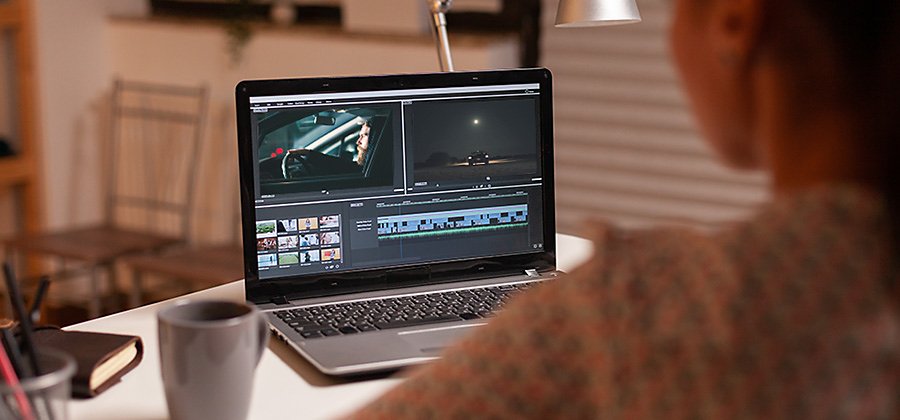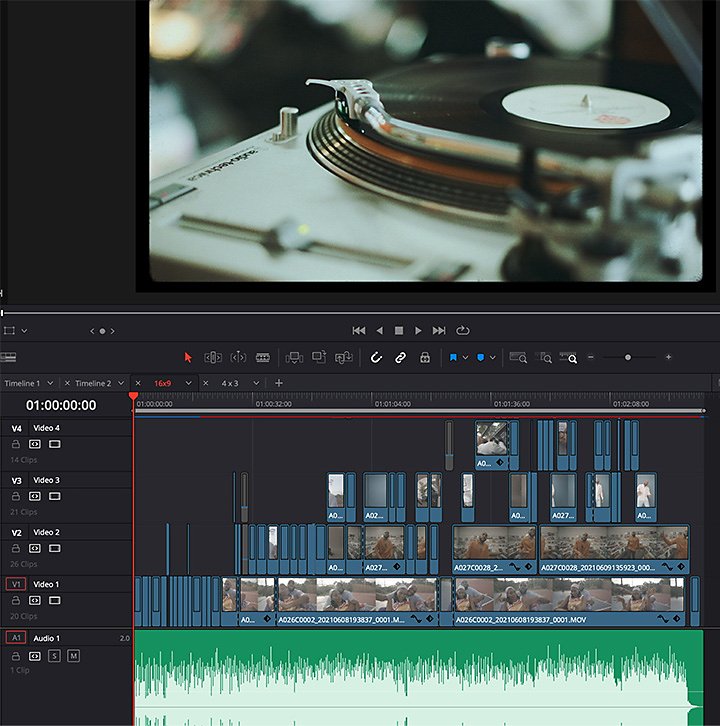
video
Make a movie trailer that entices audiences.
Movie trailers can fill audiences with expectation and awe. The best ones reveal just enough to leave the audience wanting more.
Not sure which apps are best for you?
Not sure which apps are best for you?
Take a minute. We'll help you figure it out.
Take a minute. We'll help you figure it out.
Teasers, trailers, and previews.
The length of a trailer depends on where it’s going to live online or be shown to audiences, and also when in the cycle of a movie’s marketing campaign it will be released. Earlier previews are shorter and only a few seconds long, and later previews are longer, with narrative arcs of their own.
Teasers
Teasers are very short, usually about 30 seconds to one minute long. Teasers are usually released early in a movie’s marketing campaign, and they give the audience just a small hint of what the movie will look like.
Trailer teasers
A trailer teaser is a new kind of teaser, meant to arouse interest in the release of an upcoming, longer trailer. It’s an ad for a future ad, essentially. Marketing campaigns for big-budget movies often put out a short clip to drum up excitement for a trailer prior to the release of a longer piece of video content.
These especially short trailers can be repurposed — and reoriented — for social media sites such as Instagram or Twitter, where audiences will see a single scene as they scroll through their feed. If the longer trailer has been released, a teaser trailer can be accompanied by a call to action (CTA) to view it. “Use a short trailer to drive traffic to a longer one,” says Martin.
Trailers
Trailers are the most familiar kind of movie preview, usually 2 to 2.5 minutes long. They typically run prior to feature films, though they used to come after the feature, hence the name. Trailers contain the most information about a movie. They usually show moments from several scenes in the film and run the gamut in terms of emotion or mood. Full trailers also show off the cast more than other previews. A longer movie trailer often shows most or all of the film’s main cast, names the director, and mentions other relevant details, like if the movie is based on a popular book.
Editing, genre, and sound effects.
How you edit a trailer depends on what kind of movie it is. A slow-paced period drama uses slow transitions and dissolves, but trailers for action movies can smash cut to an explosion or other burst of activity. The intro of a horror trailer might start slow with more gradual edits to build tension, but then amp up the pace with a series of quick cuts featuring brief glimpses of the enticing frights to come.

Image by Joshua Martin
Sound effects can also go a long way in conveying information to the audience about what type of film the trailer is for and how they are supposed to feel. The distant sounds of battle can let the audience know that this is a trailer for a war movie, and ambient futuristic noises can subtly suggest science fiction. “Sound effects are your best friend,” says Martin. “It’s another layer of storytelling.” Editing with sound effects or editing on beats can make transitions more natural and compelling — and better allow unrelated scenes to flow into each other.
There’s no single trailer template for shots or sound effects, but regardless of genre, trailers tend to start slow and have low stakes, yet end with greater energy and high stakes. Build up to an emotional or tense moment. The moment when a bit of the narrative might resolve is when the title should pop up instead. Make it clear to the audience that the trailer is only the setup, and the payoff can only be found in the feature film.
To voiceover or not to voiceover.
Voiceovers used to be an omnipresent part of movie trailers, with a deep-voiced narrator intoning what you’d see if you bought a ticket to an upcoming blockbuster. The narrator also announced who was in the movie, who directed it, and the release date.
For the most part, movie trailers have moved on from voiceovers. Part of the reason is that Hollywood’s most prominent voiceover narrator, Don LaFontaine, died in 2008. It’s also because many trailers today tell their story just by using audio from the film they’re promoting. Trailers without narrators seem different and more contemporary. If modern trailers do have narration, the voiceover usually just provides narration at the end of the trailer with basic info like "Now in theaters, rated PG-13," and not much else.
If you do decide to include a voiceover in a movie trailer, it will sound and feel like something from before 2000. If you’re deliberately trying to make a retro-seeming trailer, narration can go a long way to making it feel like it’s from another era. If you want a contemporary feel, a voiceover probably won’t help with that.

Movie magic, two minutes at a time.
Trailers are popular, powerful, and memorable. So much so that recently they’ve moved beyond movies and into other media. Book trailers promote literary works, YouTube channel trailers show off vlogs and other content, and trailers for video games are just as strong and dynamic as trailers for major blockbusters.
Regardless of the movie or other media you’re promoting, the most important thing to do in a trailer is to tell a story, but not all the way. Get the audience invested with the action, plot, and characters, but leave them wanting more.
Contributor
Joshua Martin
Share this article